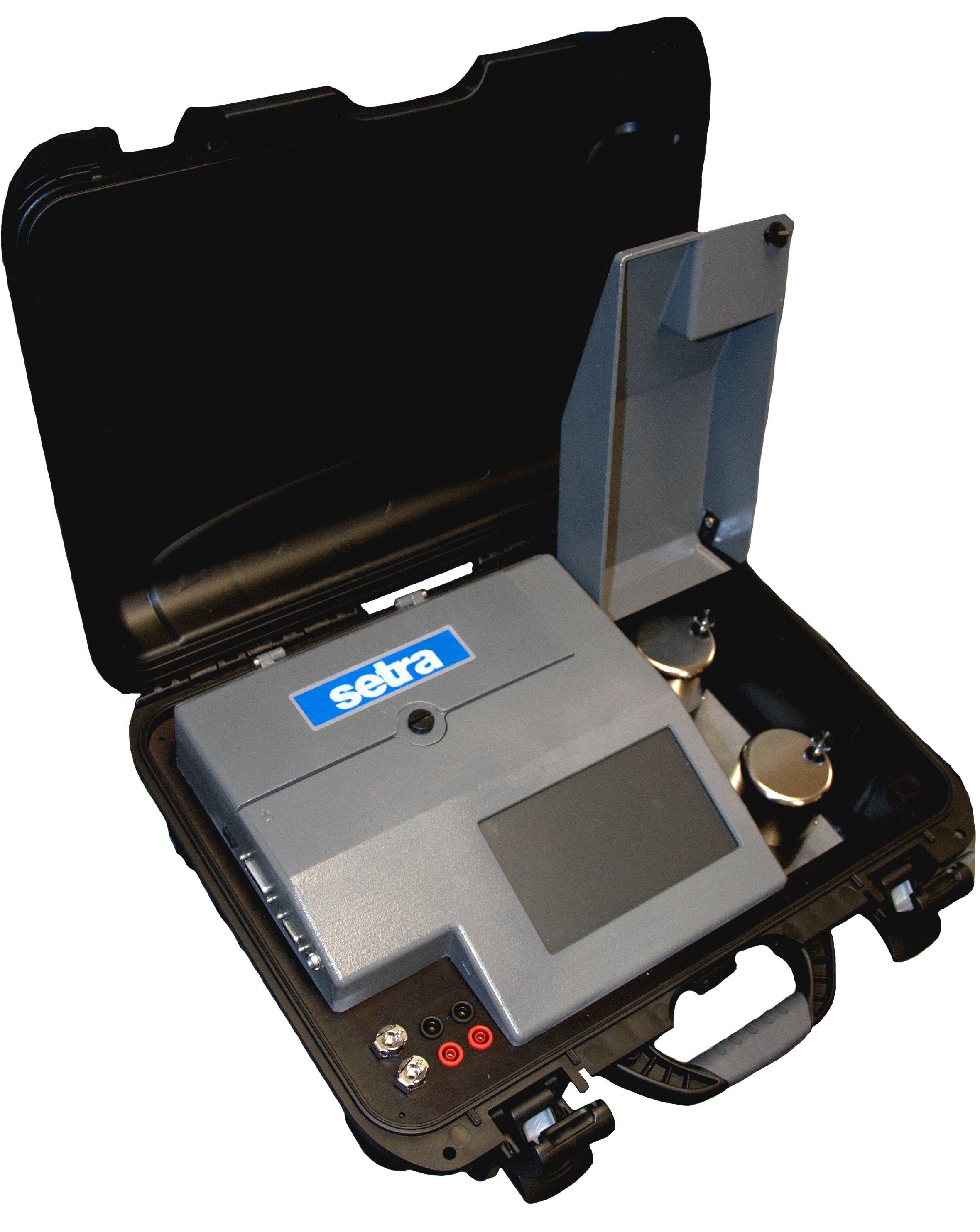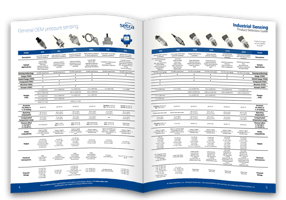Setra Blog
Using temperature stand-offs can replace expensive high temperature pressure sensors.
When selecting a pressure transducer for monitoring high temperature liquids or gases, be sure to note the operating temperature range of the transducer. This specification is included under environmental data on most manufacturers’ data sheets. The temperature compensated range specification of a transducer is the error introduced as temperature increases or decreases from 70°F. This thermal error affects both the span and zero setting of the transducers analog output and is generally listed as a percent of full scale per degree (% FS/°F). The static accuracy (accuracy at 70°F) of the pressure transducer plus the thermal error introduced by a high temperature pressure source is the total possible error for a specific high temperature pressure measurement
The MicroCal™ automated pressure calibrator is used as a stand-alone calibration standard for differential and gauge pressure sensors found in critical environments. Setra partnered with NASA to develop the industry’s quickest and most stable pressure control for low range applications. The Micro-Cal™ combines precise pressure control with high accuracy modular pressure references providing the quickest and most accurate calibration solution available on the market today. The MicroCal™ is an easy-to-use solution that significantly improves labor productivity and efficiency when compared to the leading competitors, providing immediate ROI.
Apprenticeship Programs: The Solution For More Skilled Workers
A shortage in skilled labor is a serious issue in United States'
manufacturing industry. Why? There's a misconception of what kind of training someone needs to have in order to enter professions within this industry. Many begin to build their skills through trade school before becoming a manufacturing professional. These students don't always get the proper hands-on training that can truly prepare them for the complex world of manufacturing Yet with these schools, there's still the perception that traditional degrees have more long-term value than vocation training.
Pressure Transducers in Test & Measurement:
Particle Test & Analysis
Pressure transducers are commonly used in particle test and analysis applications. Learn how sensors are used within three different scenarios of particle test and analysis.
Porosimeters/Permeameters
These products are utilized for grain volume measurements, direct pore volume measurements, and grain density determination.
Thin Film Technology Strain Gauge
Thin film pressure transducers are made by vapor deposition or sputtering of insulation and strain gauge elements directly on a polished pressure sensing diaphragm or beam. The desired strain gauge pattern is deposited either by masking the non-conductive areas or by etching away unwanted conductive material. Laser trimming is used to calibrate the resistive elements.
Many of the following technical specifications appear on datasheets for pressure transducers and similar devices. Here we review their technical definitions and relationships.
Root Sum Squares (RSS): accuracy of a pressure transducer is calculated by taking the square root of non-linearity + hysteresis + non-repeatability.
Humidity sensing is important, especially during the cold winter months that many of us are currently experiencing. Properly installing and using humidity transmitters helps building automation systems understand when the air becomes too dry or too humid for comfort.
Industrial pressure transducers are used in a wide variety of applications ranging from HVAC/R compressors, refrigeration and variable speed pumps to hydraulic pressure, oil and water. A transducer can be used anywhere there's a pipeline or chamber, its function is to sense and convert pressures into a proportional electrical output signal that is transmitted to monitoring or control system.
With different equipment comes different air pressure testing techniques for measurement. But are you sure if your procedures up to date? This article breaks down specifically what methods need to be implemented for different scenarios. These new steps in calculating
Subscribe to Our Blog!
Topics
- Critical Environments (182)
- HVAC/R (179)
- General Industrial (153)
- Building Automation (134)
- General Industrial OEM (92)
- Energy Management (85)
- Test and Measurement (66)
- HVAC/R OEM (58)
- Barometric (44)
- Alternative Fuels (42)
- Medical (40)
- Process/Mfg Tank Level (40)
- Water and Wastewater (39)
- OHV (38)
- Oil and Gas (35)
- Industrial Vacuum (29)
- Calibration (25)
- Semiconductor (25)
- Particle Counting (18)
- Cleanroom Monitoring (17)
- Room Pressure Monitoring (16)
- Trade Show (12)
- cleanroom environment (12)
- Scales (11)
- Environmental Monitoring (10)
- Power Monitoring (10)
- Healthcare (9)
- Power Meters (9)
- Software (9)
- cleanroom monitoring systems (9)
- Case Study (8)
- critical environment technologies (8)
- Humidity (7)
- data centers (7)
- particle counter (6)
- pressure transducers (6)
- LITE room pressure monitor (5)
- hardware and software cleanroom monitoring systems (5)
- setra lite (5)
- Compliance (3)
- Video (3)
- hospital spaces (3)
- FAQ & Troubleshooting (2)
- Monitoring Compounding Pharmacies (2)
- Semiconductor Manufacturing (2)
- agencies that monitor pharmacies (2)
- energy (2)
- hvac (2)
- laboratories (2)
- monitor compound pharmacy (2)
- protected environment (2)
- regulatory compliance (2)
- setra lite features (2)
- usp 797 (2)
- Current Sensors and Transducers (1)
- Current Transformers (1)
- Pressure (1)
- aerospace cleanrooms (1)
- cems (1)
- digital transformation (1)
- ipv6 multicast (1)
- ipv6 multicast address (1)
- ipv6 multicast address range (1)
- isolation room pressure monitoring (1)
- multicast address ipv6 (1)
- multicast ipv6 (1)
- operating room (1)
- pharma 4.0 (1)
- pressure sensor (1)
- pressure transducer companies (1)
- semi conductor (1)
- sensors and transducers (1)
- setra pressure transducers (1)
- submetering (1)
- sustainability (1)
- temperature monitor (1)
- temperature monitoring for pharmacies (1)
- transducers (1)
- usp 800 (1)
- water (1)
- what does hvac stand for (1)
- what is a transducer (1)
- what is hvac (1)












